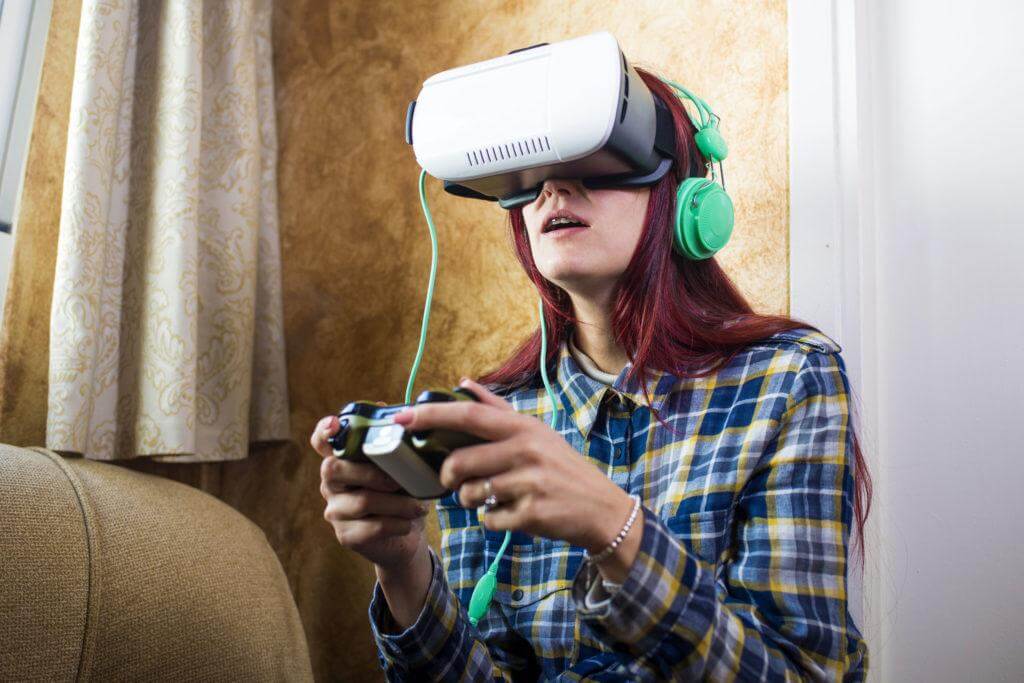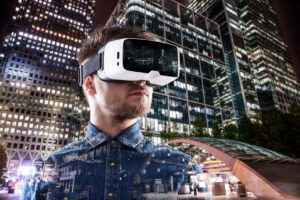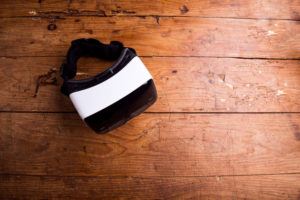Let’s dive right in and talk about the future. Right now, Virtual Reality (VR) is all over the media. Sony PlayStation is coming out with a VR headset, Samsung phones now can be placed inside a headset, Google Cardboard is a thing, and even Facebook has the Oculus Rift. Speaking of Facebook, I’m sure many of you have seen the new 360° photo feature, where you can drag the image around in a complete 360° sphere, and on the phone it will match your movement so it is like looking into a window to another world. Albeit a tiny window on your phone. But, if you have one of the Google Cardboard or Oculus Rift set ups, you can see these photographs in a fully immersive format.
Imagine walking into a theater, putting on 3D glasses, but instead you are entire submerged into the fictional world the filmmaker has made. This is rather unlikely actually. 3D films don’t draw in the crowds as much as they’d hope, and VR in public seems like a potential disaster. You are completely cut-off from the actual reality around you. A recent commercial shows a young girl on a bus enter into a dream-like world through her VR headset, and during this entire ad the only thing I can think is that the guy she’s avoiding talking to is going to steal her purse. Don’t VR in public, not without a spotter.
Where will VR thrive?
Are these 360° photographs true Virtual Reality? No, not really. Not even with video. Without more interactivity, this is not true VR. However, these 360° photographs are a great first step into the VR realm, and VR will live on and thrive in a home environment. Honestly, I don’t see many films coming out that utilize this, since it is prone to cause nausea and headaches because the user can’t control the camera movement. But games and interactive demos? That’s the ticket! I see a lot more potential for VR in interactive media. Strangely, it was the 80’s when this technology was first being developed, but it wasn’t until 30 years later that the technology reached a level suitable for mass media consumption. But will it catch on now? Remember people thought QR codes and minidisks would catch on. It has been around long enough to experience several failures (*cough* Virtual Boy *cough*), so I don’t think it will vanish, although it might not be adopted as much as other technologies.
Putting VR into production
But what does this all have to do with me? I don’t even own a VR headset! Well, not yet, but how many people have created a fully 3D 360° CG environment? It is something I have been learning how to do. Recently I experimented with converting part of a cruise ship from one of our animations (Tsunami Tuna) into a 360° photograph, and it worked. But how did I do it?
Long process short, I used a camera filter in the 3D software Maya called “Domemaster” to create a stereo camera with full 360° views and then converted those renders into a 3D “latlong” image. Once you make it a video, and you add in the metadata that tells software it is VR and not just a flat image, different services will be able to handle it properly. There is more to it than just that, of course, and live-action involves taking video with several cameras all at once at different angles and then stitching those images together.
But to sit at the peak of Everest, or to take a tour of the Titanic, or to explore a fully-fictional world from the comfort of your couch in a fully immersive experience is like nothing else you’ve ever experienced. I’ve played with the technology, and I’ve been learning how to make it happen, and I look forward to the day we can take a lunch break on Mars while still in the office in Atlanta.
VR Test Tsunami Tuna Scene 5 (stereoscopic)
 Hello everyone! My name is David Hixon, a new hire at ECG as an animator. I have freelanced here in the past, and I am excited to get started here full-time. Since I’m new, I wanted to take a second and introduce myself. I am a graduate of SCAD (Savannah College of Art and Design), and I have years of experience as a photo editor as well. I specialize in 3D lighting and texturing, although I have experience with the entire animation pipeline, and have been animating in one form or another for over a decade.
Hello everyone! My name is David Hixon, a new hire at ECG as an animator. I have freelanced here in the past, and I am excited to get started here full-time. Since I’m new, I wanted to take a second and introduce myself. I am a graduate of SCAD (Savannah College of Art and Design), and I have years of experience as a photo editor as well. I specialize in 3D lighting and texturing, although I have experience with the entire animation pipeline, and have been animating in one form or another for over a decade.


